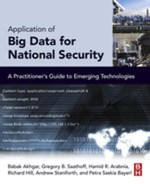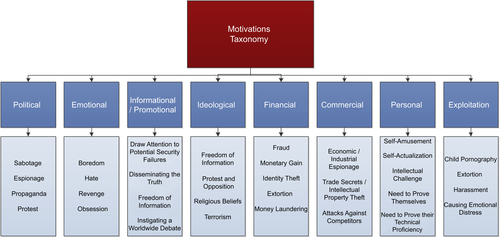Addley E, Halliday J. Operation payback cripples MasterCard site in revenge for WikiLeaks ban. The Guardian. Wednesday, December 8, 2010 [Online]. Available from: http://www.theguardian.com/media/2010/dec/08/operation-payback-mastercard-website-wikileaks (accessed 26.09.14.).
Andrews S, Yates S, Akhgar B, Fortune D. The ATHENA project: using formal concept analysis to facilitate the actions of responders in a crisis situation. In: Akhgar B, Yates S, eds. Strategic intelligence management: national security imperatives and information and communication technologies. Amsterdam: Elsevier; 2013:167–180.
Australian National Computer Emergency Response Team. Cyber Crime and Security Survey Report 2013 Available from: https://www.cert.gov.au/system/files/614/679/2013%20CERT%20Australia%20Cyber%20Crime%20%2526%20Security%20Survey%20Report.pdf, 2013 (accessed 26.09.14.).
BBC News. Google takes on top hacker George Hotz for Project Zero. BBC News. Wednesday, July 16, 2014 [Online]. Available from: http://www.bbc.co.uk/news/technology-28327117 (accessed 26.09.14.).
BBC News. Anonymous gain access to FBI and scotland yard hacking call. BBC News. Friday, February 3, 2012 [Online]. Available from: http://www.bbc.co.uk/news/world-us-canada-16875921 (accessed 26.09.14.).
BBC News. West Yorkshire PCC candidates: burglary is a priority. BBC News. Wednesday, November 7, 2012 [Online]. Available from: http://www.bbc.co.uk/news/uk-england-leeds-20243960 (accessed 19.09.14.).
BBC News. Haiti earthquake: bogus “charity” uncovered by BBC. BBC News. Tuesday, February 16, 2010 [Online]. Available from: http://news.bbc.co.uk/1/hi/in_depth/8516115.stm (accessed 26.09.14.).
Beaumont P, Hopkins N. US was “key player in cyber-attacks on Iran’s nuclear programme. The Guardian. 2012 [Online]. Available from: http://www.theguardian.com/world/2012/jun/01/obama-sped-up-cyberattack-iran (accessed 29.09.14.).
Bender J, Kelley M. The Ukraine-Russia cyber war is heating up. Business Insider India. 2014 [Online]. Available from: http://www.businessinsider.in/The-Ukraine-Russia-Cyber-War-Is-Heating-Up/articleshow/31555149.cms (accessed 29.09.14.).
Brenner S.W. Bits, bytes, and bicycles: theft and cyber theft. New England Law Review. 2012;47:817–859.
Brenner S.W. At light speed: attribution and response to cybercrime/terrorism/warfare. Journal of Criminal Law Criminology. 2007;97(2):378–476.
Brenner S.W. US cybercrime law: defining offenses. Information Systems Frontiers. 2004;6(2):115–132.
Brewster B, Akhgar B, Staniforth A, Waddington D, Andrews S, Johnson-Mitchell S, Johnson K. Towards a model for the integration of knowledge management in law enforcement agencies. International Journal of Electronic Security and Digital Forensics. 2014;6:1–17.
Brewster B, Polovina S, Rankin G, Andrews S. Knowledge management and human trafficking: using conceptual knowledge representation, text analytics and open-source data to combat organized crime. In: Graph-Based Representation and Reasoning. 2014:104–117.
Broadhurst R, Grabosky P, Alazab M, Chon S. Organizations and cyber crime: an analysis of the nature of groups engaged in cyber crime. International Journal of Cyber Criminology. 2014;8(1):1–20.
Calce M, Silverman C. Mafiaboy: A Portrait of the Hacker as a Young Man. United States: Globe Pequot; 2011.
Cambria E, Schuller B, Xia Y, Havasi C. New avenues in opinion mining and sentiment analysis. IEEE Intelligent Systems. 2013:15–21.
Campbell Q, Kennedy D.M. The psychology of computer criminals. In: Bosworth S, Kabay M.E, Whyne E, eds. Computer Security Handbook. New York, NY: John Wiley and Sons, Inc.; 2009.
Council on Foreign Relations. United States of America v. Members of China’s People’s Liberation Army. 2014 [Online]. Available from: http://www.cfr.org/intellectual-property/united-states-america-v-members-chinas-peoples-liberation-army/p32998 (accessed 25.09.14.).
Dittrich D. The conflicts facing those responding to cyberconflict. USENIX. 2009 Available from: https://www.usenix.org/legacy/publications/login/2009-12/openpdfs/dittrich.pdf (accessed 29.09.14.).
Dittrich D, Himma K.E. Active Response to Computer Intrusions. The Handbook of Information Security. vol. 3. 2005 664–681.
Elis N. Can big data predict the next cyber attack? Jerusalem Post. Monday, May 12, 2014 [Online]. Available from: http://www.jpost.com/Enviro-Tech/Can-big-data-predict-the-next-cyber-attack-351957 (accessed 29.09.14).
ePOOLICE. ePOOLICE—about. 2013 [Online]. Available from: https://www.epoolice.eu/EPOOLICE/about.jsp (accessed 19.08.13.).
Fafinski S, Dutton W.H, Margetts H. Mapping and Measuring Cybercrime OII Forum Discussion Paper No. 18. Oxford Internet Institute, University of Oxford; 2010.
Federal Bureau of Investigation. Two Northern Californian Men in Sextortion Plot Targeting Professional Poker Players Recieve Federal Prison Sentences. 2013 [Press Release]. Available from: http://www.fbi.gov/losangeles/press-releases/2013/two-northern-california-men-in-sextortion-plot-targeting-professional-poker-players-receive-federal-prison-sentences (accessed 29.09.14.).
Federal Bureau of Investigation. Cyber Crime. 2014 [Online]. Available from: http://www.fbi.gov/about-us/investigate/cyber (accessed 19.09.14.).
Finkle J, Henry D. Bank group warns of heightened risk of cyber attacks. Reuters. 2012 [Online]. Available from: http://www.reuters.com/article/2012/09/20/us-jpmorganchase-website-idUSBRE88I16M20120920 (accessed 25.09.12.).
Finklea K.M, Theohary C.A. Cybercrime: conceptual issues for congress and US law enforcement. Congressional Research Service; 2012 Available from: http://fas.org/sgp/crs/misc/R42547.pdf (accessed 29.09.14).
Fleishman G. Escalating cyber-attacks: it’s about time. The Economist. 2014 [Online]. Available from: http://www.economist.com/blogs/babbage/2014/02/escalating-cyber-attacks (accessed 26.09.14.).
Gercke M. Understanding cybercrime: phenomena, challenges and legal response. International Telecommunication Union; 2012 Available from: http://www.itu.int/ITU-D/cyb/cybersecurity/docs/Cybercrime%20legislation%20EV6.pdf.
Glomseth R, Gottschalk P, Solli-Sæther H. Occupational culture as determinant of knowledge sharing and performance in police investigations. International Journal of the Sociology of Law. 2007;35:96–107.
Greenwald G, MacAskill E, Poitras L. Edward Snowden: the whistleblower behind the NSA surveillance revelations. The Guardian. 2013 [Online]. Available from: http://www.theguardian.com/world/2013/jun/09/edward-snowden-nsa-whistleblower-surveillance.
Greitzer F.L, Frincke D.A, Zabriskie M. Social/Ethical Issues in Predictive Insider Threat Monitoring. In: Dark M.J, ed. Information Assurance and Security Ethics in Complex Systems: Interdisciplinary Perspectives. Hershey, PA: IGI Global; 2011:132–161.
Guerrini F. Brazil’s world cup of cyber attacks: from street fighting to online protest. Forbes. Tuesday, June 17, 2014 [Online]. Available from: http://www.forbes.com/sites/federicoguerrini/2014/06/17/brazils-world-cup-of-cyber-attacks-from-street-fighting-to-online-protest/ (accessed 26.09.14.).
Haberman C.P, Ratcliffe J.H. The predictive policing challenges of near repeat armed street robberies. Policing. 2012;6:151–166.
Hamill J. Shadowy Drug Fans Threaten FBI Agents, Vow to “Avenge” Silk Road Shutdown. 2013 [Online]. Available from: http://www.theregister.co.uk/2013/10/10/dark_web_plans_revenge_for_dread_pirate_roberts_arrest/ (accessed 29.09.14.).
HM Government. A strong Britain in an age of uncertainty: the national security strategy. HM Government; 2010 Available from: https://www.gov.uk/government/uploads/system/uploads/attachment_data/file/61936/national-security-strategy.pdf.
Honan M. How Apple and Amazon security flaws led to my epic hacking. Wired. 2012 [Online]. Available from: http://www.wired.com/2012/08/apple-amazon-mat-honan-hacking/all/ (accessed 26.09.14.).
van Heerden R.P, Irwin B, Burke I. Classifying network attack scenarios using an ontology. In: Proceedings of the 7th International Conference on Information Warfare and Security. Seattle: University of Washington; 2012:311–324 March 22-23, 2012.
ILO (International Labour Office). Operational Indicators of Traffcking in Human Beings. ILO (International Labour Office); 2009 Available from: http://www.ilo.org/wcmsp5/groups/public/–-ed_norm/–-declaration/documents/publication/wcms_105023.pdf.
Jalil S.A. Countering Cyber Terrorism Effectively: Are We Ready to Rumble? GIAC Security Essentials Certification (GSEC) Practical Assignment Version 1.4b, Option 1, [Online]. SANS Institute; 2003 Available from: http://www.giac.org/paper/gsec/3108/countering-cyber-terrorism-effectively-ready-rumble/105154.
Kaiman J. China reacts furiously to US cyber-espionage. The Guardian. Tuesday, May 20, 2014 [Online]. Available from: http://www.theguardian.com/world/2014/may/20/china-reacts-furiously-us-cyber-espionage-charges (accessed 25.05.14.).
Kasper W, Vela, M. Sentiment analysis for hotel reviews. In: Jassem K, Fuglewicz P, Piasecki M, Przepiorkowski A, eds. Proceedings of the Computational Linguistics-Applications Conference (CLA–2011). 2011:45–52 Jachranka.
Kellermann T. Money laundering in cyberspace. The World Bank. 2004 Available from: http://www-wds.worldbank.org/external/default/WDSContentServer/WDSP/IB/2006/04/21/000012009_20060421140305/Rendered/PDF/359050rev0Mone1nCyberspace01PUBLIC1.pdf (accessed 29.09.14.).
Kilger M, Arkin O, Stutzman J. Profiling. In: The Honeynet Project, ed. Know Your Enemy: Learning about Security Threats. second ed. Boston, MA: Addison-Wesley Professional; 2004:505–556.
Kushner D. The real story of STUXNET. Spectrum, IEEE. 2013;50:48–53.
Leyden J. UK hacker jailed for nicking PayPal, banking data from millions. 2012 [Online]. Available from: http://www.theregister.co.uk/2012/04/04/cybercrook_jailed/ (accessed 26.09.14.).
Lockley E, Akhgar B. Understanding the situational awareness in cybercrimes: case studies. In: Akhgar B, Staniforth A, Bosco F, eds. Cyber Crime and Cyber Terrorism Investigators Handbook. Syngress, Elsevier; 2014:101–121.
Matsumoto D, Hwang H.S, Frank M.G. The role of emotion in predicting Violence. FBI Law Enforcement Bulletin. 2012:1–11.
Manoske A. How does cyber warfare work? Forbes. 2013 [Online]. Available from: http://www.forbes.com/sites/quora/2013/07/18/how-does-cyber-warfare-work/ (accessed 25.09.14.).
McGuire M, Dowling S. Cyber Crime: A Review of the Evidence—Summary of Key Findings and Implications. The UK Home Office; 2013 Available from: https://www.gov.uk/government/uploads/system/uploads/attachment_data/file/246749/horr75-summary.pdf.
Millar S. Teenage clicks. The Guardian. Tuesday, June 5, 2001 [Online]. Available from: http://www.theguardian.com/technology/2001/jun/05/hacking.security (accessed 26.09.14.).
NBC News. I’m Not the One They Need to Get. 2003 [Online]. Available from: http://www.nbcnews.com/id/3078580/ns/technology_and_science-security/t/im-not-one-they-need-get/#.VCU69vldV8E (accessed 26.09.14.).
O’Connor B, Balasubramanyan R, Routledge B.R, Smith N.A. From tweets to polls: linking text sentiment to public opinion time series. In: Proceedings of the International AAAI Conference on Weblogs and Social Media (ICWSM 11), Washington, DC, May 2010. 2010:122–129.
Perry W.L, McInnis B, Price C.C, Smith S.C, Hollywood J.S. Predictive Policing: The Role of Crime Forecasting in Law Enforcement Operations. 2013 RAND Safety and Justice Program. Available from: https://www.ncjrs.gov/pdffiles1/nij/grants/243830.pdf.
Profis S. How those nude photos were leaked (and why you should care). 2014 [Online]. Available from: http://www.cnet.com/uk/how-to/how-nude-photos-leaked-protect-icloud-account-security/ (accessed 26.09.14.).
Rustad M.L. Private enforcement of cybercrime on the electronic frontier. Southern California Interdisciplinary Law Journal. 2001;11:63–116.
Sanchez R. WikiLeaks QandA: Who is Bradley Manning and What Did He Do? 2013 [Online]. Available from: http://www.telegraph.co.uk/news/worldnews/wikileaks/10210160/WikiLeaks-Q-and-A-who-is-Bradley-Manning-and-what-did-he-do.html (accessed 29.09.14.).
Schneier B. Chinese hacking of the US. Blog. 2014 [Online]. Available from: https://www.schneier.com/blog/archives/2014/06/chinese_hacking_1.html (accessed 25.09.14.).
Schneier B. Matthew Weigman. Blog. 2009 [Online]. Available from: https://www.schneier.com/blog/archives/2009/09/matthew_weigman.html (accessed 26.09.14.).
Smith R, Grabosky P, Urbas G. Cyber Criminals on Trial. Cambridge: Cambridge University Press; 2011.
Staniforth A, Nitsch H. Preventing terrorism together: a framework to provide social media anti-radicalization training for credible community voices. In: Akhgar B, Arabnia H.R, eds. Emerging Trends in ICT Security. London: Morgan Kaufmann, Elsevier; 2014:549–556.
Steinberg J. Nude photos of Jennifer Lawrence and Kate Upton leak: five important lessons for all of us. Forbes. Sunday, August 31, 2014 [Online]. Available from: http://www.forbes.com/sites/josephsteinberg/2014/08/31/nude-photos-of-jessica-lawrence-and-kate-upton-leak-five-important-lessons-for-all-of-us/ (accessed 29.09.14.).
Sterner E. Hacktivists’ Evolution Changes Cyber Security Threat Environment. 2012 Available from: http://www.worldpoliticsreview.com/articles/11864/hacktivists-evolution-changes-cyber-security-threat-environment (accessed 26.09.14.).
Sykora M.D, Jackson T.W, OBrien A, Elayan S. National security and social media monitoring: a presentation of the EMOTIVE and related systems. In: Proceedings of the 2013 European Intelligence and Security Informatics Conference. 2013:172–175.
The Economist. War on terabytes: as banking has gone electronic, it has also become vulnerable. The Economist. 2013 [Online]. Available from: http://www.economist.com/news/finance-and-economics/21571152-banking-has-gone-electronic-it-has-also-become-vulnerable-war-terabytes (accessed 29.09.14.).
Thomson Reuters. Haystacks of needles: law enforcement fights organized crime with smart analytics. Thomson Reuters; 2014 Available from: http://www.globalinitiative.net/download/general/global/Thompson%20Reuters%20-%20Smart%20Analytics%20-%20July%202014.pdf.
Travis A. Police forces will struggle to make further cuts, says watchdog. The Guardian. 2013 [Online]. Available from: http://www.theguardian.com/uk-news/2013/jul/18/police-forces-futher-cuts-watchdog (accessed 29.09.14.).
US Air Force. Our Mission. 2014 [Online]. Available from: http://www.airforce.com/learn-about/our-mission/ (accessed 25.09.14.).
U.S. Department of Justice. US Charges Five Chinese Military Hackers for Cyber Espionage Against US Corporations and a Labor Organization for Commercial Advantage. 2014 [Online]. Available from: http://www.justice.gov/opa/pr/us-charges-five-chinese-military-hackers-cyber-espionage-against-us-corporations-and-labor (accessed 29.09.14.).
U.S. Department of Justice. Cyber terror [Online]. FBI Law Enforcement Bulletin. 2011;80(11) Available from: http://leb.fbi.gov/2011/november/leb-november-2011.
United Nations Office on Drugs and Crime. Global Report on Trafficking in Persons. United Nations Office on Drugs and Crime; 2009 Available from: http://www.unodc.org/documents/Global_Report_on_TIP.pdf.
Winter R. Ransonware: protection, prevention and what to do in an attack. The Guardian. 2013 [Online]. Available from: http://www.theguardian.com/media-network/media-network-blog/2013/may/31/ransomware-virus-protection-attack (accessed 26.09.14.).
Yang C.C, Ng T.D. Terrorism and crime related Weblog social network: link, content analysis and information visualization. In: IEEE Intelligence and Security Informatics Conference, May 23-24, 2007, New Brunswick, NJ. 2007:55–58.


